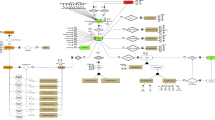Abstract
The web becomes an overwhelmingly huge repository of data. At the same time, users demand access to the information on the web in a more natural way. In other words, users require interaction with the web using natural linguistic terms and expect human comprehensive answers. The introduction of Resource Description Framework (RDF) is a promising step towards significant changes how systems can utilize the web. The very nature of RDF format that ensures high interconnectivity of pieces of data creates an opportunity to process and analyse data in a different way. In this paper, we address the problem of processing web information using fuzzy-based technologies. In particular, we adopt a linguistic representation model to determining alternatives that match a given reference with the highest possible degree and satisfying some specific criteria. The process of comparing alternatives to the reference is feature-driven while an entity is described by its features. The proposed methodology is able to deal with features of different nature and utilize comparison mechanisms suitable for each type of features. The utilization of 2-tuple allows for comparing and aggregating linguistic-based descriptions of features, especially when the reference does not specify values of features explicitly. In experiments, we show the utilization of our approach in the domain of pharmacy. The obtained results show the advantage of using the feature-based comparison process and linguistic aggregation procedure over results obtained using the RDF query language SPARQL (SPARQL Protocol and RDF Query Language).







Similar content being viewed by others
Notes
Lexicomp: official drug reference for the American Pharmacist Association (http://www.lexi.com/).
Microdemex: http://micromedex.com/.
High blood pressure.
http://dbpedia.org/page/Category:Symptoms.
Table 9 Results for Query_6: Find a drug for Hypertension with the safest possible pregnancy category that has no interaction with Ibuprofen and Cimetidine and infrequent gastrointestinal-related side effects. A combo drug that contains two components of Trimethoprim and Sulfamethoxazole.
Table 10 Results for real-life scenario query: A pregnant woman with Diarrhea is diagnosed with Urinary Tract Infection, what medications are safe to recommend?
References
Aczél J (1984) On weighted synthesis of judgements. Aequ Math 27:198–199
Basca C, Bernstein A (2014) Querying a messy web of data with avalanche. J Web Semant 26:1–28
Bashon Y, Neagu D, Ridley MJ (2013) A framework for comparing heterogeneous objects: On the similarity measurements for fuzzy, numerical and categorical attributes. Soft Comput 17:1595–1615
Bizer C, Heath T, Berners-Lee T (2009) Linked data-the story so far. Int J Semant Web Inf Syst 4:1–22
Curé O (2014) On the design of a self-medication web application built on linked open data. Web Semant: Sci, Serv Agents World Wide Web 24(27–32):1
Fenza G, Loia V, Senatore S (2009) Local semantic context analysis for automatic ontology matching. In: 2009 International Fuzzy Systems Association World Congress and 2009 European Society for Fuzzy Logic and Technology Conference, IFSA-EUSFLAT 2009-Proceedings. pp 1315–1320
Freitas A, Oliveira JG, O’Riain S, da Silva JCP, Curry E (2013) Querying linked data graphs using semantic relatedness: a vocabulary independent approach. Data Knowl Eng 88(126–141):11
Harth A, Maynard D (2014) The semantic web challenge 2012. Web Semant: Sci, Serv Agents World Wide Web 24(1–2):1
Hartig O, Bizer C, Freytag J (2009) Executing SPARQL queries over the web of linked data. In: 8th International Semantic Web Conference, ISWC 2009. pp 293–309
Herrera F, Martinez L (2000a) A 2-tuple fuzzy linguistic representation model for computing with words. Fuzzy Syst, IEEE Trans 8:746–752
Herrera F, Martinez L (2000b) An approach for combining linguistic and numerical information based on the 2-tuple fuzzy linguistic representation model in decision-making. Int J Uncertain, Fuzziness Knowl-Based Syst 8:539–562
Hossein Zadeh PD, Reformat MZ (2013a) Context-aware similarity assessment within semantic space formed in linked data. J Ambient Intell Human Comput 4:515–532
Hossein Zadeh PD, Reformat MZ (2013b) Fuzzy semantic similarity in linked data using wikipedia infobox. In: IFSA World Congress and NAFIPS Annual Meeting (IFSA/NAFIPS), 2013 Joint. pp 395–400
Lassila O, Swick R, Lassila O, Swick R (1999) Resource description framework (RDF) model and syntax specification. Resource description framework (RDF) model and syntax specification. W3C Tech. Reports and Publications W3C Tech. Reports and Publications http://www.w3.org/TR/1999/REC-rdf-syntax-19990222
Loia V, Senatore S, Sessa MI (2004) Similarity-based SLD resolution and its role for web knowledge discovery. Fuzzy Sets Syst. 144:151–171
Morales-Del-Castillo JM, Peis E, Herrera-Viedma E (2010) A filtering and recommender system for e-scholars. Int J Technol Enhanc Learn 2:227–240
Moreno JM, Morales del Castillo JM, Porcel C, Herrera-Viedma E (2010) A quality evaluation methodology for health-related websites based on a 2-tuple fuzzy linguistic approach. Soft Comput 14:887–897
Oldakowski R, Bizer C (2005) Semmf: A framework for calculating semantic similarity of objects represented as rdf graphs. In: Poster at the 4th International Semantic Web Conference (ISWC 2005)
Quilitz B, Leser U (2008) Querying distributed RDF data sources with SPARQL. In: 5th European Semantic Web Conference, ESWC 2008. pp 524–38
Sánchez D, Batet M, Valls A, Gibert K (2010) Ontology-driven web-based semantic similarity. J Intel Inform Syst 35:383–413
Turney PD, Pantel P (2010) From frequency to meaning: vector space models of semantics. J Artif Intel Res 37:141–188
Tversky A (1977) Features of similarity. Psychol Rev 84:327–352
Zadeh LA (1975) The concept of a linguistic variable and its application to approximate reasoning-I. Inf Sci 8:199–249
Zadeh PDH, Reformat MZ (2013) Assessment of semantic similarity of concepts defined in ontology. Inf. Sci. 250:21–39
Author information
Authors and Affiliations
Corresponding author
Additional information
Communicated by C.-S. Lee.
Rights and permissions
About this article
Cite this article
Zadeh, P.D.H., D. Hossein Zadeh, M. & Reformat, M.Z. Feature-driven linguistic-based entity matching in linked data with application in pharmacy. Soft Comput 21, 353–368 (2017). https://doi.org/10.1007/s00500-015-1632-6
Published:
Issue Date:
DOI: https://doi.org/10.1007/s00500-015-1632-6




